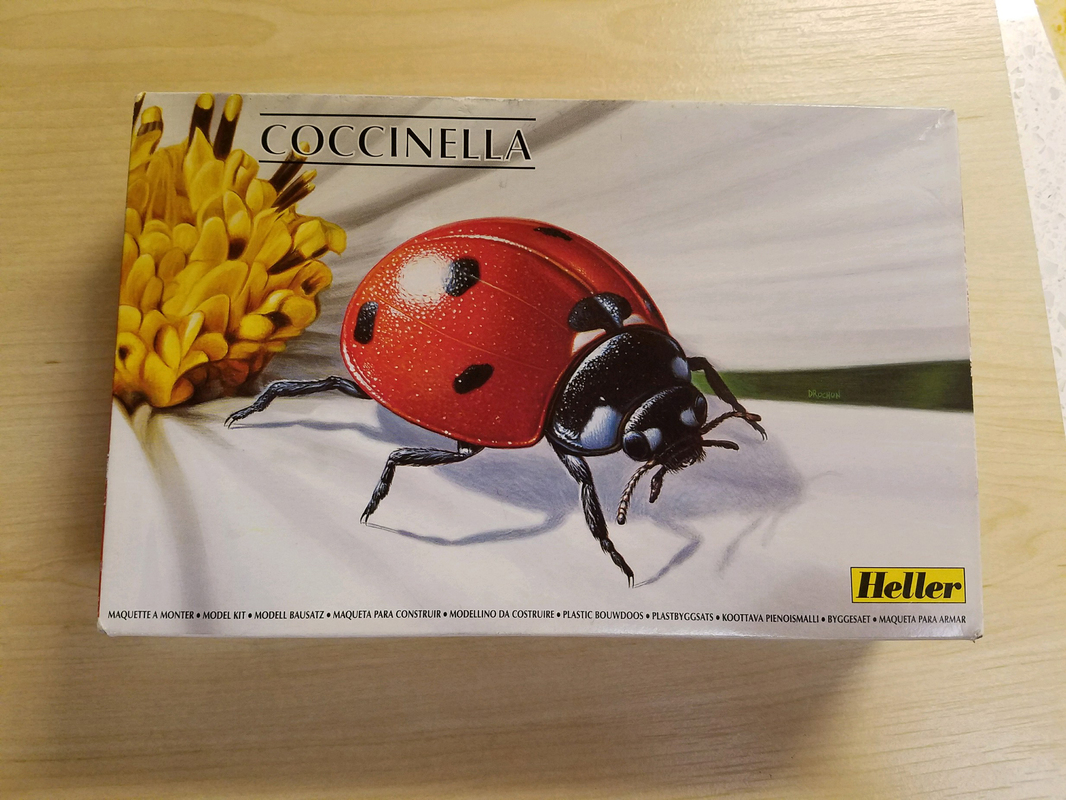Walk-around of the seven-spotted lady beetle,
Coccinella septempunctata Linnaeus, 1758 by Heller (2001). This species occurs naturally throughout much of the Holarctic and is considered the most common lady beetle in Europe. It has been introduced into continental North America (where it has pushed out populations of native species, including
C. novemnotata), Hawaii, and apparently Madagascar. This species is no stranger to toy form, and while several generic figures may be attributable to this species, it has been specifically made by Bullyland, 4D Master, Blip Toys, Furuta, Kabaya, and CollectA that I am aware of (although I am still lacking the Bullyland figure).
Heller was new to me when I stumbled upon this figure on eBay. The French company appears to specialize in model kits, primarily military craft and infantry soldiers. However, some recent snooping around revealed there are (at least) three other European insects: the scarabaeoids
Oryctes nasicornis and
Lucanus cervus and the ant
Formica rufa. I have also seen the ant, lucanid, and lady beetle packaged together in a set marketed as ‘Forest Monsters’. Just yesterday I won on eBay the two scarabs, but I really really want that ant!
The lady beetle figure comes in 11 pieces (venter; elytra; head+pronotum; 2 antennae; 6 legs), all in a base red color. There are also decals for the maculae that are applied with water, however I decided not to use the decals but rather paint the maculae myself. It is also intended to paint the elytra red but since their base color in adequate for this species, I did not apply an additional coat of red.
The first thing I did was paint the individual parts. I then attached everything, using glue where needed (the legs and antennae have holes in which to insert them, but the pronotum, elytra, and venter are all to be supported by glue). I applied additional glue to the base of the legs and antennae to secure them. I then did touch-ups of the areas where the paint got rubbed or scraped away during physical assembly. Lastly, I coated the whole figure with a satin varnish. The instructions suggested using modeling clay to attach the beetle to a branch or log, but I will leave my figure independent of a base (although it fits nicely on the plastic logs that the 4D Master figures come in!).
The figure is 90 mm, making it roughly 10:1 for an average specimen. On forums for model kit collectors, I have seen the four Heller insects indicated as being 4:1; this might be true for the scarab beetles, but the lady beetle is clearly in a much larger scale (as too is probably the ant)!
On to the pics:

windows 7 screenshot

windows 7 screenshot

windows 7 screenshot

windows 7 screenshot

windows 7 screenshot

windows 7 screenshot

windows 7 screenshot

windows 7 screenshot
...and the final product:

windows 7 screenshot
and lastly with the Furuta (Insect Science) and Kabaya (Insect Directory) figures, that are as close to 1:1 as possible among figures:

windows 7 screenshot
